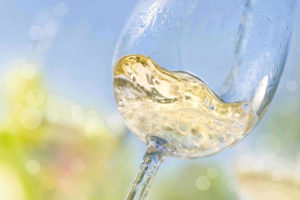2019 wine sales up

Spain has taken over second place from Australia for country of origin with an increased share of 14.0% from 2018’s 13.0%.
Last year’s increase in sales returned wine to the growth path it had been on for the two years prior to 2018 at which time sales dipped from 9.1 million cases to 8.9 million, reducing wine’s category share of the overall alcohol consumption market from 27.7% to just 27.0% according to Drinks Ireland|Wine’s Irish Wine Market Report 2019.
Nevertheless, wine remained the nation’s second-favourite alcohol tipple after beer but at 1.4% down, per capita consumption of wine continued falling in 2019 by in line with an overall downward trend in alcohol consumption generally. Last year saw a further reduction in alcohol consumption of 0.2% in terms of litres of pure alcohol per adult. Since 2001, average per adult alcohol consumption has fallen by 23.2% in Ireland according to CSO and Revenue Data.
On-trade share continues declining
By channel, some 83% of wine was sold through the off-trade sector last year, up one percentage point on 2018’s share, highlighting the on-trade’s continuing loss of share.
Although still the favourite, white wine continued to lose share of the overall wine consumption market to the growing demand for rosé. At 48% white wine was down another one percentage point while rosé grew share by the same to 6% with red remaining unchanged at 46%.
The report’s author Jonathan McDade, Head of Drinks Ireland|Wine, points out that rosé’s 2019 share “was almost double the share since 2016”.
Spain rises to second place
For the sixth year in succession Chile comfortably retained its place at the top of the table for country of origin, increasing its share from 27.2% to 27.5% on sales of 2.48 million cases in 2019, 2.5% up on 2018’s 2.42 million case figure. But a long way behind Chile Spain has taken over second place from long-time holder Australia with an increased share of 14.0% from 2018’s 13.0% as Spain witnessed its case sales increase 9.2% from 1.15 million to 1.26 million.
Spain’s gain was indeed Australia’s loss as its share of the wine market here fell to 12.8% from 15.6% on sales of 1.15 million cases (down a significant 16.8% from 2018’s 1.39 million case sales figure).
With 12.6% of the wine market, up from 2018’s 11.9% share, comes France in fourth place with case sales of 1.13 million, up 7.4% from 1.06 million in 2018.
Behind this, Italy takes fifth place with case sales of 882,513, up 5.7% from 2018’s 834,640 figure, thus increasing Italy’s share of the wine market here from 9.4% to 9.8%.
New Zealand and Argentina also grew case sales here in 2019.
Wine excise takings up again
However the excise levy on wine continues to exercise Drinks Ireland|Wine as wine’s sales increase meant that the Exchequer’s excise receipts for wine grew by €2 million to €378 million in 2019.
“Irish consumers pay €3.19 in excise per standard bottle (13% ABV)” points out the author, “which is the highest rate in the EU. Of the 28 EU Member States (in 2019), 15 of them charge no duty on wine.”
Including VAT, the consumer now pays €4.87 in tax on a €9 bottle of wine which, when packing and distribution costs of €3.60 are filtered out, leaves just 53 cent for the producer.
Sparkling wine gets an additional excise “hit” which translates to a total excise levy of €6.37 on a standard bottle of bubbly. Again, of the 28 EU Member States (in 2019), nine of them did not charge any excise on sparkling wine, points out the report.
Indeed Finland, with the highest aggregate taxes on alcohol in the EU, only takes €2.98 excise on still and sparkling wine.
The UK paid excise of €2.50 on still and €3.21 on sparkling in 2017.
Drinks Ireland|Wine has therefore called on the government to consider reducing the excise rate on wine in light of the catastrophic effects on the industry of the Covid-19 pandemic.
“Prior to the Covid-19 crisis” states Jonathan McDade, “the wine sector employed over 1,100 people directly while supporting thousands of other jobs in Ireland’s 13,000 restaurants, independent off-licences, supermarkets and hotels that sell wine. To offset the losses endured by the drinks and hospitality sector because of Covid-19, Drinks Ireland|Wine call on the Government to seriously consider an excise reduction on wine for Budget 2021.”
The report demonstrates that despite the high excise levy, Ireland’s wine consumers continue to become more sophisticated in their tastes, he states, supported by the huge amount of choice that that has come to the market over the past 20 years.
“In 2000, 4.8 million cases of wine were sold here” points out Jonathan McDade, “and by 2019 over nine million cases were sold. This comes at a time when overall alcohol consumption is falling in Ireland so we can really see how Ireland’s love affair with wine has grown.”








